
What is Brennivín and How Is It Made?


Brennivín, also known as "Black Death," is Iceland's signature spirit. This iconic drink is by some considered a national treasure with roots in Iceland's interesting history of alcohol.
Partaking in local food and drink is a great way to get to know a culture, and Icelandic culture, with its many curious oddities, is no exception. Brennivín, a drink with a somewhat daunting reputation, has long since become the most iconic Icelandic spirit and an emblem of the country's drinking culture.
Having a shot of brennivín at a bar in Reykjavik is on the to-do list for many visitors to Iceland, right next to trying an Icelandic hot dog at the world's most famous hot dog stand. Many people end up buying a bottle after acquiring a taste for it, whether to share with family and friends or simply to drink in their accommodation in Iceland before hitting the town.
In this article, we'll get to the bottom of the bottle by unveiling the interesting history, crafting methods and customs associated with brennivín. If you want to get the full experience of the Icelandic drinking culture while visiting the country, we recommend getting insight from a local expert such as the one found on this Reykjavik beer & schnapps tour. A shot of Brennivín is also offered at the end of the excellent Reykjavik Food Walk Tour, which offers valuable insight into Iceland's culture of food and drink.
- Learn more in our Ultimate Guide to Icelandic Liquor and Spirits
- Feeling thirsty? Find the best Happy Hours in Reykjavik
What is Brennivín?
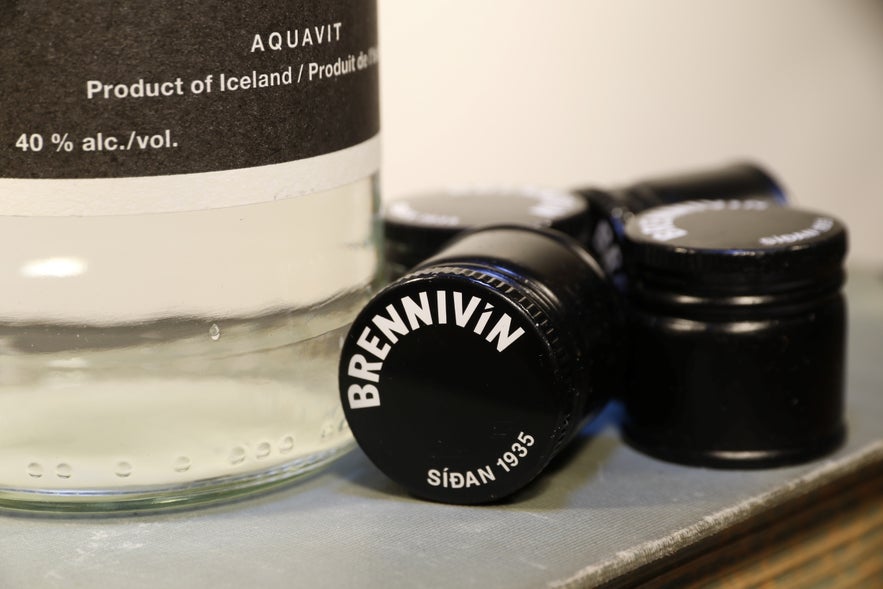
Brennivín is considered a type of aquavit, a traditional flavored spirit primarily produced in the Nordic countries. The name aquavit is derived from the Latin "aqua vitae," meaning "water of life," which is quite apt, as you'll certainly be the life of the party after partaking in these waters!
The primary ingredient in brennivín is fermented potato or grain mash, which then undergoes a distillation process to increase its alcohol content. This is quite similar to the distillation process of vodka, but the main difference is that while vodka is an unflavored spirit, the signature taste of brennivín comes from the caraway seeds used, which give it its signature cumin flavor.
- Check out our Guide to Icelandic Flowers and Herbs
Another crucial part of brennivín's flavor comes from the remarkably pure Icelandic water used in the distillation process. Brennivín is traditionally consumed straight and chilled as a schnapps, particularly in celebration of Icelandic festivals alongside some of Iceland's notorious traditional dishes (more on those later!)
History of Brennivín
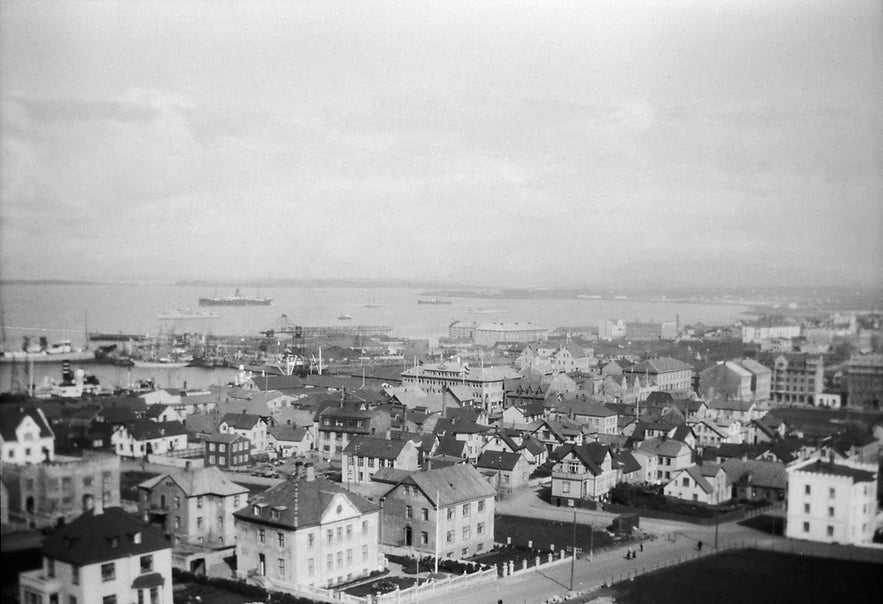
Image from Wikimedia, Creative Commons, from Swedish National Heritage Board.
The name brennivín translates to "burning wine," coming from the Icelandic words "brenna" (burning) and "vín" (wine or spirit). The word was used throughout the centuries for various spirits and liquors brought to Iceland by foreign merchants, mainly from Denmark. While an iconic part of Iceland's heritage, the drink we call brennivín today only has a history reaching back a century.
- Learn more: A Complete History of Iceland
Iceland went through a prohibition era that started in 1915, during which the sale and consumption of alcohol were banned. This ban initially included all alcoholic beverages, but over the years, the restrictions were gradually relaxed. By 1935, the prohibition on spirits was lifted, although beer with an alcohol content higher than 2.25% remained banned. The lifting of the prohibition on spirits paved the way for the legal production and sale of Brennivín.
 Brennivín was introduced to the Icelandic market in the 1930s after the prohibition on spirits was lifted. It was branded with a black label, an attempt by the authorities to dissuade people from purchasing it by making it look unappealing. Ironically, this branding had the opposite effect, and Brennivín quickly became a popular spirit among Icelanders.
Brennivín was introduced to the Icelandic market in the 1930s after the prohibition on spirits was lifted. It was branded with a black label, an attempt by the authorities to dissuade people from purchasing it by making it look unappealing. Ironically, this branding had the opposite effect, and Brennivín quickly became a popular spirit among Icelanders.
Brennivín remained the most popular drink in Iceland until the 1980s. The sale of beer with alcohol content was allowed on March 1st, 1989, which has since been known as "Beer Day" in Iceland. Today, beer is the most popular alcoholic drink in Iceland.
How and When to Drink Brennivín
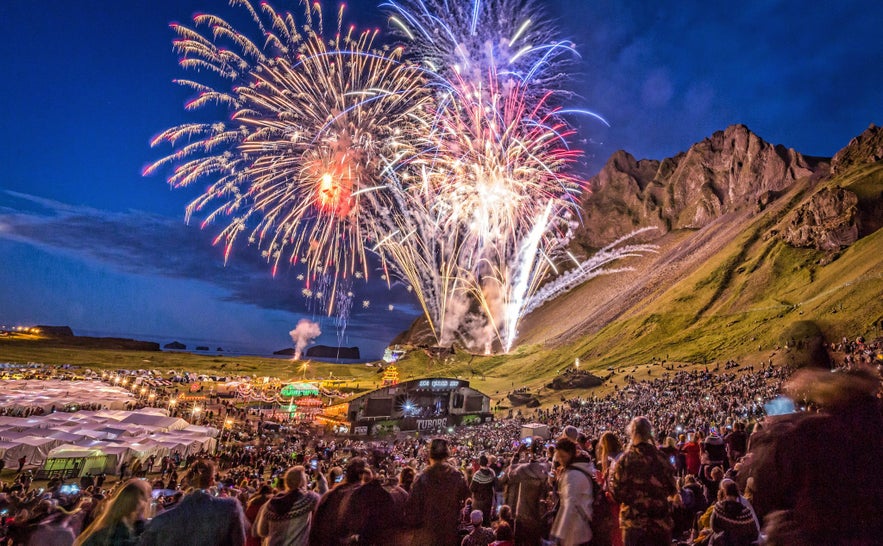
Brennivín, like many traditional spirits, can be enjoyed in a variety of ways depending on personal preference and the occasion. The most traditional way to drink brennivín is straight up as a cold shot, but some people prefer to sip it or mix it with other drinks. Brennivín and coke at room temperature used to be a popular drink back in the day, but the taste is not for everyone, so partake at your own risk!
While taking a shot of brennivín downtown is still relatively common, and some people like to keep a bottle around the house, it is rarely the drink of choice for Icelandic people anymore. It has rather become something to have on special occasions and festivities, especially those with ties to the national heritage.
Brennivín is often packed by Icelandic people going camping or traveling into the countryside. There are few things better to have to pass around when singing by a campfire than a flask of brennivín! Iceland's largest festival, Thjodhatid, is held in the Westman Isles, where chances are you'll find people with plenty of brennivín on hand who might even be willing to share!
- Read more: The Top 20 Festivals in Iceland
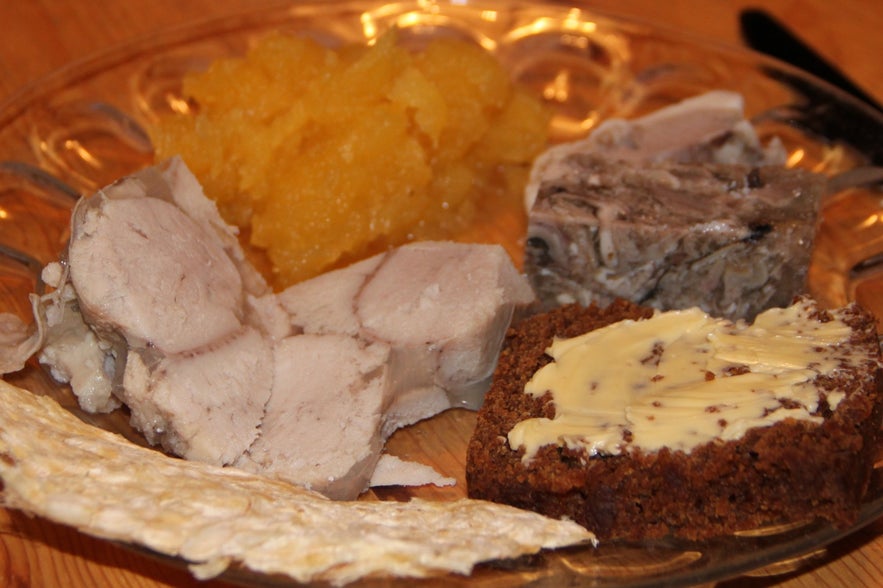
One of Iceland's most infamous customs is the midwinter festival, Thorrablot, where people come together for feasting and drinking. The traditional Icelandic foods that are served there are, well, exotic, to put it mildly! They include cured meats, fermented shark, soured ram testicles, and liver sausage. Yum!
- See also: Þorrablót
These so-called delicacies reach back to a time in Icelandic history when food had to be preserved in innovative ways to keep it from spoiling, which resulted in rather unique flavors. Today most Icelandic people will only partake in these foods during Thorrablot and wash the taste down with brennivín. Calling brennivín a palate cleanser would be a stretch, though, as the lingering aftertaste is quite strong!
Overall, you should consume brennivín in whichever way suits you best, whether it's as a shot, a sip, or not at all. Our word of advice is that if you're new to brennivín, you should serve it as cold as possible to begin with, as it's the easiest way to get acquainted with the rich flavors.
Types of Brennivín
Today, there are many types of brennivín available, crafted from distilleries of varying sizes. Here are a few you should keep your eyes open for.
Brennivín (The Original)
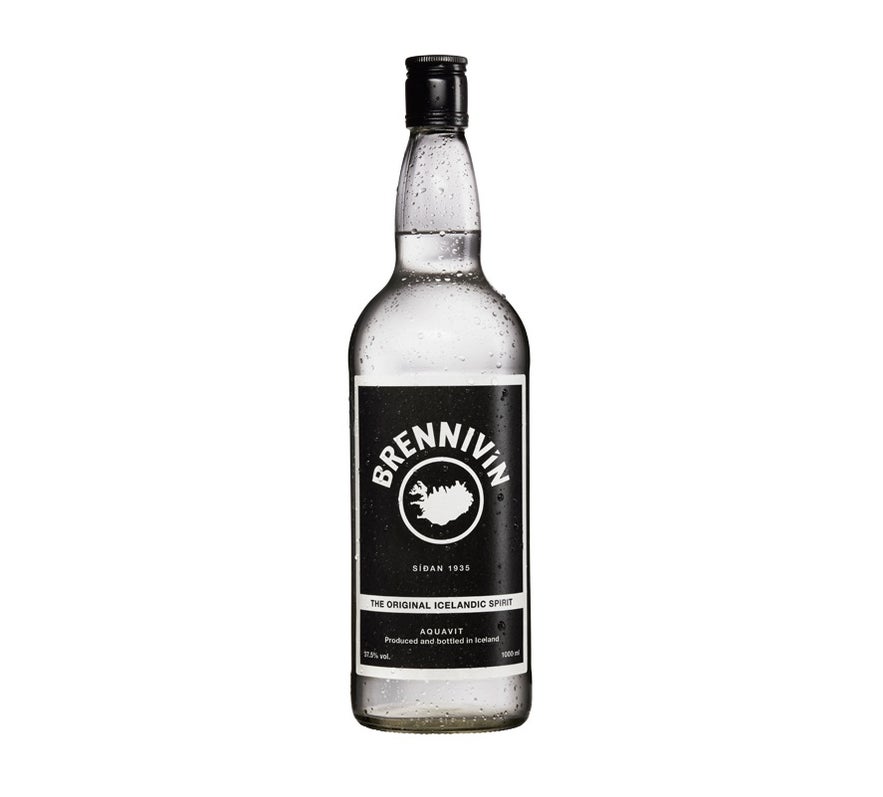 The iconic brennivín bottle has only undergone minor cosmetic changes since it was first introduced in 1935. Easily recognizable from the black label, this is what most Icelandic people think of when they think of brennivín.
The iconic brennivín bottle has only undergone minor cosmetic changes since it was first introduced in 1935. Easily recognizable from the black label, this is what most Icelandic people think of when they think of brennivín.
Helvíti Brennivín
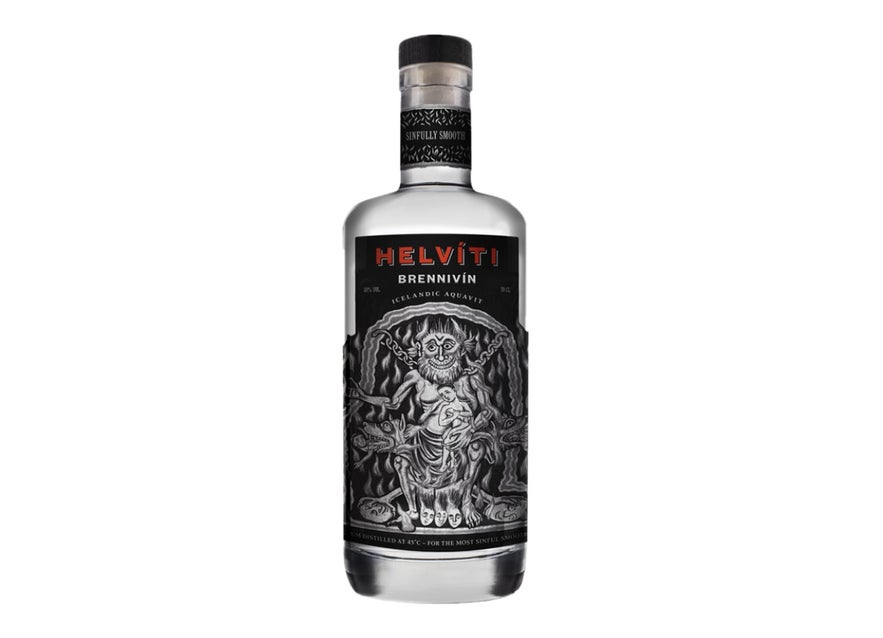
Helvíti is the Icelandic word for "hell," and the people in Europe believed that the entrance to hell was located in the crater of the Icelandic volcano Hekla. With fittingly infernal packaging, Helvíti brennivín from Foss Distillery is perfect for anyone with a little bit of a devil in them.
- Learn about Volcanic Eruptions in Iceland: A History of Fire
64° Reykjavík Distillery Brennivín
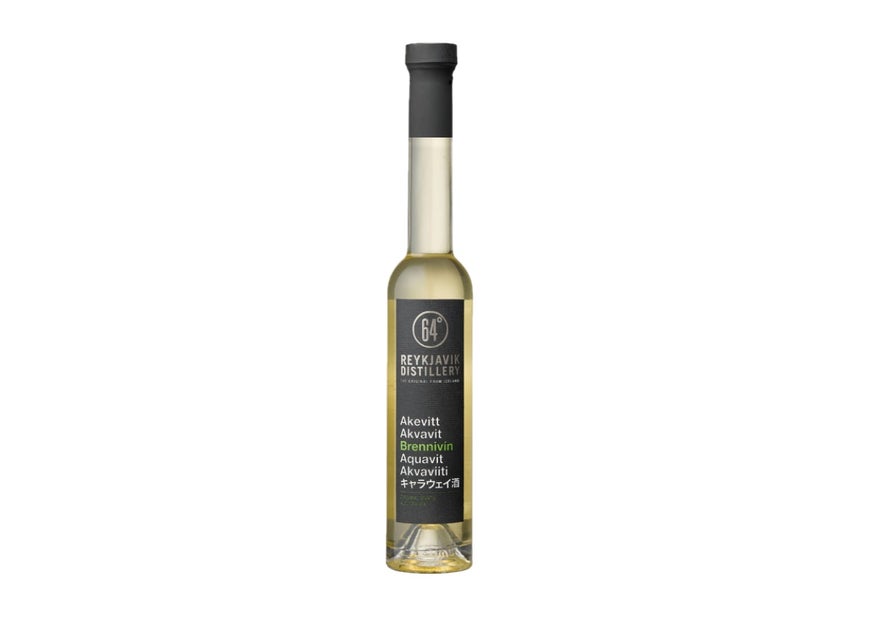 64° Reykjavík Distillery is a family-run micro-distillery in Iceland, the first of its kind. They take pride in their brennivín being far from the harshness of the black death stigma but packing a carefully crafted flavor of Iceland's botanicals to represent the country's true flavor.
64° Reykjavík Distillery is a family-run micro-distillery in Iceland, the first of its kind. They take pride in their brennivín being far from the harshness of the black death stigma but packing a carefully crafted flavor of Iceland's botanicals to represent the country's true flavor.
Bróðinn Brennivín
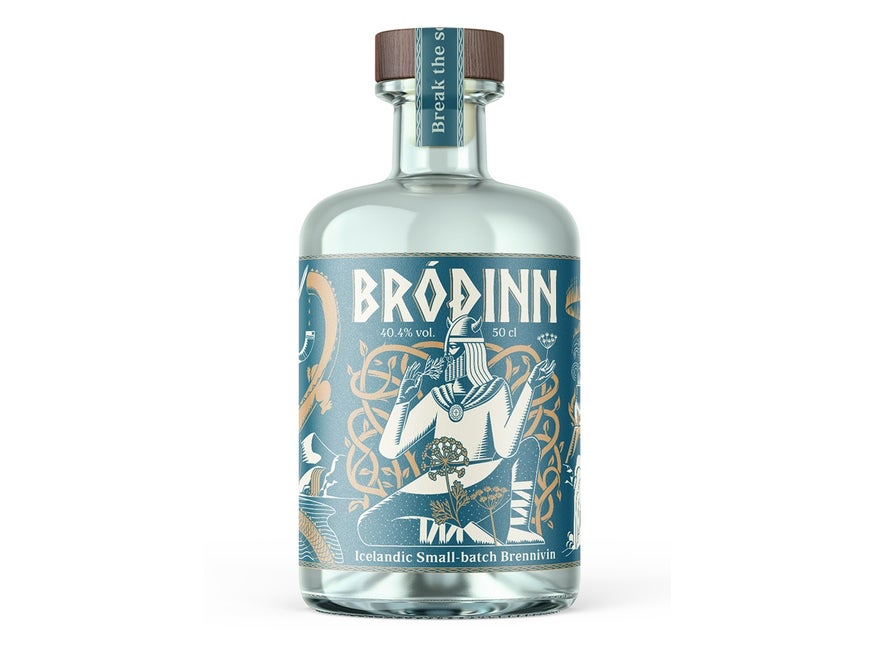
Bróðinn is a small-batch brennivín distilled by Hafnafjordur-based distillery Marberg with imagery and taste harking back to Norse mythology. Their website tells of a seemingly forgotten Norse deity by the name of Bróðinn gifted with the knowledge of every plant that grew in the nine realms, so we should probably trust him to know his stuff.
- See also: A Complete Guide to Folklore in Iceland
Víti Brennivín
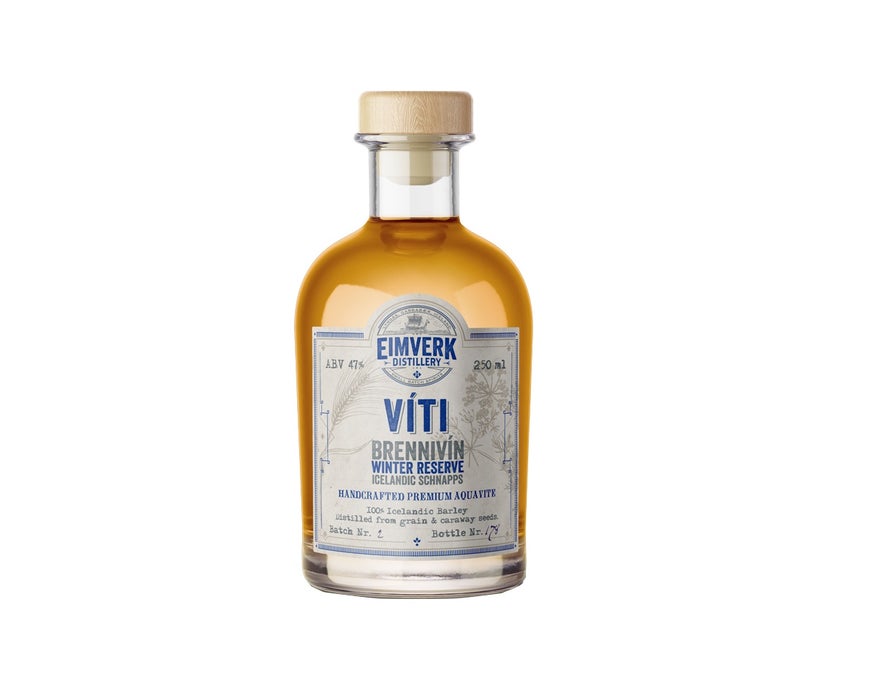
Eimverk is another family-operated distillery that has garnered a lot of international recognition for creating Flóki, the first Icelandic whiskey, as well as other finely crafted spirits. Their Víti brennivín is triple distilled with 100% Icelandic ingredients, packing a ton of flavor.
Spirits of Iceland Brennivín
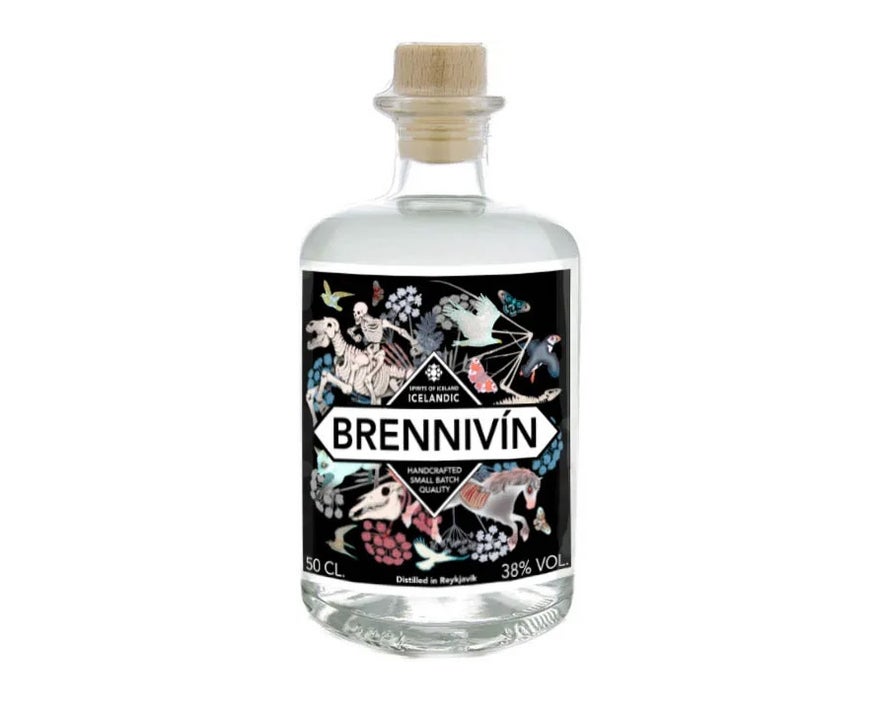 Spirits of Iceland is yet another family-run micro-distillery offering authentic Icelandic flavors with a modern presentation. The distillery has roots in heavy metal which should directly translate to feeling pretty rock and roll after taking a sip of this all Icelandic brennivín.
Spirits of Iceland is yet another family-run micro-distillery offering authentic Icelandic flavors with a modern presentation. The distillery has roots in heavy metal which should directly translate to feeling pretty rock and roll after taking a sip of this all Icelandic brennivín.
That should cover everything you need to know about brennivín and how it's made. Do you have any questions? What's your experience with brennivín? Let us know in the comments!
บทความอื่นที่น่าสนใจ
สถานที่เที่ยวที่ดีที่สุดตามเส้นทางวงแหวน
ไอซ์แลนด์มีถนนวงแหวนหลักอยู่หนึ่งเส้นคือทางหลวงหมายเลข 1 หากขับรถรอบวงแหวนนี้หนึ่งรอบต้องใช้เวลาเท่าไหร่ และมีสถานที่ท่องเที่ยวสำคัญอะไรอยู่บนเส้นทางหลักนี้บ้าง วงแหวนทองคำของไอซ์แลนด์มีความยาว...อ่านเพิ่ม
คู่มือฉบับสมบูรณ์เกี่ยวกับการปะทุของภูเขาไฟลิทลิ-ฮรูตูร์ในปี 2023
เรียนรู้ทุกสิ่งที่คุณจำเป็นต้องรู้เกี่ยวกับการปะทุของภูเขาไฟลิทลิ-ฮรูตูร์ (Litli-Hrutur) ในไอซ์แลนด์ในปี 2023! พื้นที่ที่เกิดการปะทุใหญ่แค่ไหน? การเยี่ยมชมภูเขาไฟตอนนี้ปลอดภัยหรือไม่? วิธีที่ดีที่สุดใ...อ่านเพิ่ม
คู่มือท่องเที่ยว: บลูลากูน ไอซ์แลนด์
เรียนรู้ทุกสิ่งที่คุณอยากรู้เกี่ยวกับบลูลากูนของประเทศไอซ์แลนด์ ค้นหาว่าบลูลากูนคืออะไร วิธีเดินทาง เวลาเปิดทำการ เวลาที่ดีที่สุดในการไปใช้บริการ และเคล็ดลับอื่นๆ ในการวางแผนการเดินทางของคุณในคู่...อ่านเพิ่ม

ดาวน์โหลดตลาดการท่องเที่ยวที่ใหญ่ที่สุดของไอซ์แลนด์ลงในโทรศัพท์ของคุณเพื่อจัดการการเดินทางทั้งหมดของคุณได้ในที่เดียว
สแกนรหัส QR นี้ด้วยกล้องในโทรศัพท์ของคุณแล้วกดลิงก์ที่ปรากฏขึ้นเพื่อเพิ่มตลาดการท่องเที่ยวที่ใหญ่ที่สุดของไอซ์แลนด์ไว้ในกระเป๋าของคุณ ป้อนหมายเลขโทรศัพท์หรือที่อยู่อีเมลของคุณเพื่อรับ SMS หรืออีเมลพร้อมลิงก์ดาวน์โหลด




















